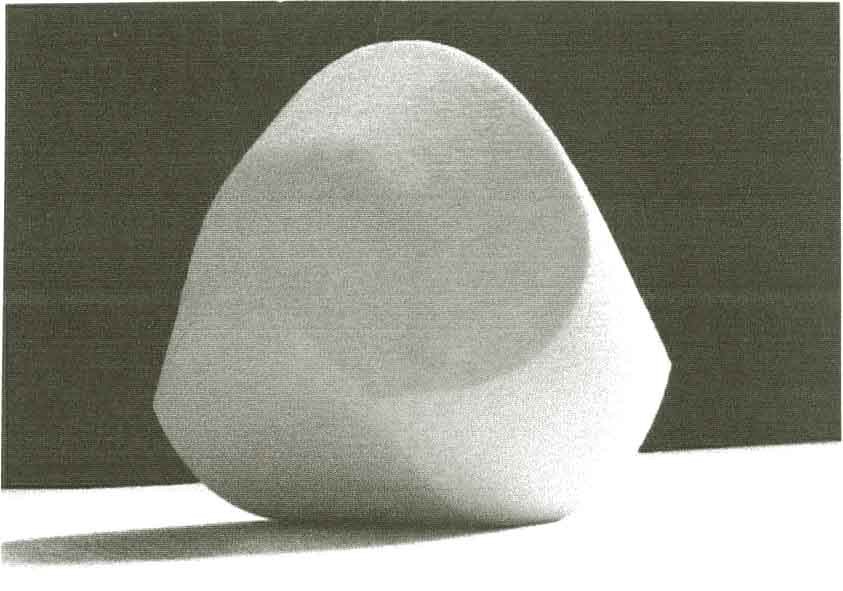Lionel Messi wins nine year trade mark battle to register his surname
The six time Ballon D'Or winner, Lionel Messi won a nine year legal battle in September 2020, allowing him to register his surname as an EU trade mark. The immense reputation of the footballer was sufficient to create a conceptual difference between the marks MESSI and an earlier mark for MASSI which was relied upon to oppose his application. The case confirms that the reputation of the trade mark applicant is relevant to the assessment of both conceptual similarity and likelihood of confusion, provided it constitutes a famous name.
It will be interesting to see how this case is applied. Messi is arguably one of the most famous footballers and, indeed, individuals in the world. Whether an individual's fame is a matter of common knowledge (thus obviating the need to provide reputational evidence) is likely to be a key point for dispute in future cases. Unfortunately, the judgment provided no guidance as to the criteria for assessing the fame of the applicant. It will also be interesting to see whether the case is extended beyond the realm of famous individuals to well-known corporates.
Read more
General Court finds evidence of acquired distinctiveness for Glaxo's purple mark for inhalers insufficient
In Glaxo Group v EUIPO, the General Court upheld the EUIPO's refusal of Glaxo's application for an EUTM consisting of the colour purple (Pantone 2587C) in relation to asthma treatments in Class 5 and asthma inhalers in Class 10. In agreeing with the Board of Appeal that the sign lacked inherent distinctive character, the General Court noted that, whilst colours are capable of conveying certain associations of ideas, and of arousing feelings, they possess "little inherent capacity for communicating specific information". The decision also demonstrates the issues that can arise when seeking to demonstrate acquired distinctiveness throughout the EU, in terms of the probative value of the evidence.

Glaxo had relied upon evidence in the form of opinion surveys, statements from employees and healthcare professionals, extracts from websites, advertising materials, sales figures, market shares and marketing expenditure. However, having considered each form of evidence, the General Court found the evidence insufficient. In particular, the surveys carried out among general practitioners, pharmacists and patients in 15 EU Member States were incapable of demonstrating acquired distinctive character throughout the Member States in which they were conducted, and the results could therefore not be extrapolated to other Member States.
As for the statements of general practitioners and pharmacists and website and blog extracts, these merely referred to the colour purple in general. The evidence was insufficient to demonstrate a link established by the relevant public between the Pantone shade and the goods concerned, given that the goods in question were marketed under several shades of purple.
Finally, the sales figures and advertising material was only secondary evidence, which could support direct evidence of distinctive character acquired through use. Even though this evidence demonstrated that large numbers of inhalers had been sold in the EU, it did not demonstrate that the public targeted by the goods perceived the mark as an indication of origin.
CJEU considers shape provisions in Gömböc case
In Gömböc Kutató, Szolgáltató és Kereskedelmi Kft v Szellemi Tulajdon Nemzeti Hivatala, the Hungarian Supreme Court referred questions to the CJEU concerning the absolute grounds for refusal of trade mark protection for signs that consist of the shape of a product which is necessary to obtain a technical result and/or which gives substantial value to the goods. The CJEU's decision provides some clarification of these provisions.
The sign applied for (in classes 14 (decorative items), 21 (decorative crystalware) and 28 (toys)) was for the shape of the 'Gömböc', the world's only artificial self-righting shape:

The CJEU said that the assessment of whether a sign consists of the shape of the product which is necessary to obtain a technical result is not limited to an assessment of the graphical representation of the mark. Other information, such as the relevant public's perception, could be used to identify the essential characteristics of the sign. However, when assessing whether those characteristics perform a technical function, relevant information must originate from objective and reliable sources. At this point, the relevant public's perception is not relevant but such objective sources could include data regarding IP rights previously granted, expert opinions, scientific publications, catalogues and websites, describing the technical features of the product.
Meanwhile, the ground for refusal based on the shape giving substantial value should not be applied systematically where a sign consisting exclusively of the shape of the goods had the benefit of design protection or was exclusively a decorative item. There must be objective and reliable evidence that consumers' decision to buy the product is based to a large extent on one or more characteristics of the shape.
Land Rover fails to clear the KitKat hurdle
Jaguar Land Rover (JLR) had applied to register UK trade marks to protect the shapes of several iterations of its Land Rover Defender vehicle. An example of two of the marks applied for is below.


The applications were largely refused by the Hearing Officer, on the basis that the marks lacked (1) inherent distinctiveness in relation to any of the goods and services which were related to motor vehicles, and (2) acquired distinctiveness for all of the goods and services covered by the applications. JLR appealed these findings to the High Court, but failed on both grounds.
In respect of inherent distinctiveness, the Court refused to overturn the Hearing Officer's finding that all of the features of the shapes were either within the norms and customs of the passenger car sector, or only minor variations of them. It emphasised that the crucial point to consider is whether the shape "as a whole" departs significantly from those norms and customs. In assessing whether it does, one must look through the eyes of the average consumer of passenger cars, not car experts or enthusiasts. JLR's expert report explaining the uniqueness of the designs was given little weight, on the basis that differences that were important to an expert may not be to the average consumer. The Court disregarded public statements from famous motoring journalists (such as "the most recognised automotive silhouette on the planet") for the same reason.
On acquired distinctiveness, JLR failed on the same point that had prevented Nestlé from registering the shape of its KitKat bar as a UK trade mark. While a large proportion of consumers were shown, through survey evidence, to recognise that the shapes covered by the marks were Land Rover Defenders, this did not prove that consumers regarded the shapes, by themselves, as distinguishing the goods. In short, a consumer being able to identify the product from the mark is not the same as showing that he or she perceives those marks to be trade marks. This test for acquired distinctiveness does make it very hard for brand owners to register shapes as trade marks, unless they can show that they market their goods/services under the shape alone, without using the brand name.
High Court upholds opposition to NOSECCO based on PROSECCO
In Les Grands Chais De France SAS v Consorzio Di Tutela Della Denominazione Di Origine Controllata Prosecco, the association established to protect the name Prosecco, a protected designation of origin ('PDO'), was successful in defending an appeal against opposition proceedings relating to the UK designation of an international registration for an application incorporating the name 'Nosecco'. The opposition was upheld on two grounds under the UK Trade Marks Act 1994: (a) under s.3(4), that the use of the mark was prohibited under EU law by Art103(2)(b) of Regulation (EU) No 1308/2013 which protects a PDO against any "misuse, imitation or evocation" (b) under s.3(3)(b), that the mark was of such a nature as to deceive the public.
In relation to the first ground, CJEU case law has confirmed there can be 'evocation' even where there is no likelihood of confusion. The UKIPO concluded that consumers would bring to mind Prosecco, when seeing "Nosecco", as a 'prosecco-like' drink containing no alcohol. The case is a useful reminder also of the value of social media evidence, given its nature as independently produced evidence.
We wrote about the decision in the INTA Bulletin.
CJEU clarifies approach to likelihood of confusion assessment
In EUIPO v Equivalenza Manufactory, the CJEU found that the General Court had incorrectly approached the assessment of a likelihood of confusion by wrongly taking into account the circumstances of the marketing of registered goods when evaluating the intrinsic similarity of the signs. Such marketing circumstances should only be considered at the final stage of an evaluation, that is to say, during the global assessment. As previous decisions have adopted an inconsistent approach to this question, this clarification is useful.
ITM Enterprises, owner of a figurative mark for "LABELL" registered for perfumes, had filed an opposition against Equivalenza's application to register a figurative mark for "BLACK LABEL BY EQUIVALENZA" for perfumery. The EUIPO Opposition Division and Board of Appeal had upheld the opposition on the basis of a likelihood of confusion. The General Court had upheld Equivalenza's appeal. In its decision, it took into account the different circumstances in which the goods were marketed.
On appeal by the EUIPO to the CJEU, however, the General Court's decision was set aside. Whilst marketing circumstances are a relevant factor at the global assessment stage, they are not relevant to the assessment of the similarity of the signs. The General Court had also incorrectly assessed the visual similarity of the signs. Further, whilst in some instances conceptual differences may counteract phonetic and visual similarities (i.e. "where at least one of the two signs have, in the mind of the relevant public, a clear and specific meaning which that public is capable of grasping immediately"), such circumstances did not apply here, and a global assessment was necessary.
Reputation and distinctiveness of opponent's mark irrelevant to similarity assessment
In China Construction Bank Corporation v EUIPO, the CJEU annulled a General Court decision that had upheld an opposition to an application by China Construction Bank (CCB) for a figurative CCB mark, based on an earlier CB mark owned by Groupement des cartes bancaires.


One issue was whether it was appropriate, when assessing the similarity of the signs, to take into account the earlier mark's reputation. The CJEU noted that the examination of the similarity of the signs consists of a visual, phonetic and conceptual comparison. However, the reputation and distinctive character of the earlier mark did not involve a comparison between a number of signs, but concerned only one sign, i.e., the opponent's mark. The factors of reputation and distinctive character of the earlier mark were therefore fundamentally different in scope from similarity of the signs and an examination of one did not allow conclusions to be drawn concerning the other. Even if the earlier CB mark had a high degree of distinctive character, this did not determine whether, and if so to what extent, there was similarity with the applied for sign. In particular, the reputation or high level of distinctive character of a trade mark did not lead to a finding that one of the constituent elements of a sign (here, the CB element) dominated over another element when assessing similarity of signs.
CJEU confirms that sales of second hand cars and replace parts constituted use of Ferrari's TESTAROSSA trade mark
EU and UK trade marks are liable to be revoked if "genuine use" (i.e. actual use of the mark by its owner or by someone else with its consent) cannot be proven for a continuous five year period. The CJEU's decision in Ferrari SpA v DU confirmed that the sale of second-hand sales of luxury sports cars, as well as replacement and accessory parts, may constitute genuine use of a trade mark, even where those models have been discontinued.
The iconic Ferrari "Testarossa" was sold between 1984 and 1996. After it stopped making the car, Ferrari continued to sell second hand models, and replacement parts for them. The "TESTAROSSA" EUTM was registered for, among other things, "vehicles, aircraft and water vehicles and parts thereof".
The CJEU's decision establishes a number of useful principles. When selling the second hand Testarossas, Ferrari was confirming that the goods were genuine Testarossas, and that they therefore came from the trade mark owner – i.e. the "TESTAROSSA" trade mark was being used as a badge of origin for the second-hand goods. Further, use of the trade mark for replacement parts could also constitute genuine use in respect of the original goods though it appears that the goods (in this case, vehicles) must have previously been sold by the trade mark owner. Finally, use in respect of a particular market segment only could support a registration for a wider category of goods: the fact that the cars were sold at a particularly high price, and therefore belonged to a specific market, was not sufficient to make them an independent sub-category of "vehicles".
Read more
CJEU clarifies rules relating to marks contrary to accepted principles of morality
Fack Ju Göthe is a 2013 German comedy film which reached an audience of almost 7.4 million in Germany. The phrase is clearly an intentional misspelling of ‘F*ck You (Goethe)'. In 2015, Constantin Film Produktion, one of the film's production companies, filed an EUTM application for the word mark ‘Fack Ju Göthe’ covering 13 classes of goods and services. The EUIPO Examiner refused the application on the basis of Article 7(1)(f) of the EU Trade Mark Regulation, that the mark was contrary to accepted principles of morality. Constantin appealed the decision to the EUIPO Board of Appeal and the General Court, but was unsuccessful in both instances, and so appealed to the CJEU.
The CJEU held (Constantin Film Produktion GmbH v EUIPO) that the phrase ‘accepted principles of morality’ refers to the fundamental moral values and standards to which a society adheres at a given time, as determined by reference to the social context including where appropriate cultural, religious or philosophical diversities. The examination cannot be confined to an abstract assessment of the mark applied for. In order to fall foul of this ground, the mark in question must be perceived by the relevant public as being contrary to such norms - here the CJEU concluded that the title of the comedy film in question was not perceived as morally unacceptable by the German-speaking public at large. Being ‘in bad taste’ was not sufficient. Taking these principles into account, the CJEU found that the General Court had erred in law by finding that the mark was contrary to them and overturned the General Court decision.
We wrote about the decision in this article in CITMA Review.
CJEU considers application by agent without consent
In EUIPO v John Mills Ltd, the CJEU considered for the first time the interpretation of Article 8(3) of the EU Trade Mark Regulation. This provision provides an absolute ground of refusal where an agent or representative of the proprietor of a mark applies for registration of that mark without the consent of its proprietor.
John Mills had filed an EUTM application for the word mark MINERAL MAGIC covering goods in class 3. The application was opposed under Article 8(3) by Jerome Alexander Consulting Corporation on the basis that John Mills was its exclusive distributor in the EU, pursuant to a distribution agreement. It relied upon its earlier American marks for MAGIC MINERALS BY JEROME ALEXANDER in support of its opposition under Article 8(3).
The General Court had found that the opposition under Article 8(3) should be rejected as the marks were only similar, not identical. The CJEU disagreed with this approach. Article 8(3) was not limited to the case where the mark applied for by the agent or representative was identical to the earlier mark, and there was nothing that could be inferred from the travaux préparatoires relating to Article 8(3) to limit it in this way. The General Court's conclusion would also prevent the objective of the provision, which was to prevent the misuse of the earlier mark by the agent/representative as such persons could exploit the knowledge and experience acquired during their business relationship with the proprietor of the mark, and could therefore improperly benefit from the effort and investment made by the proprietor.
Further the CJEU confirmed that John Mills was an 'agent' pursuant to Article 8(3) – this concept should be interpreted in such a way as to cover all forms of relationship based on a contractual agreement where one of the parties represents the interests of the other and the relationship is of a kind that gives rise to a fiduciary relationship. This could arise by imposing on the 'agent', whether expressly or implicitly, a general duty of trust and loyalty as regards the interests of the proprietor of the earlier mark. The distribution agreement contained provisions making John Mills a preferred distributor, as well as a non-compete clause and provisions relating to Jerome Alexander's IP rights.